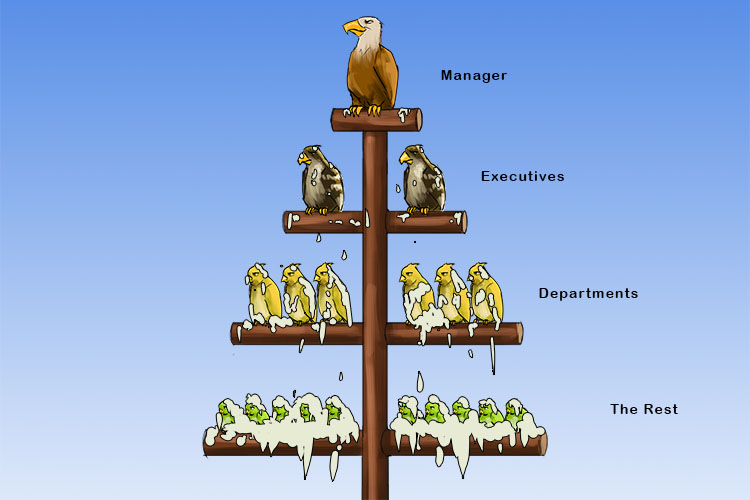centralisation – maintaining control by keeping authority at the most senior levels of an organisation
(Pronounced sen-truh-ly-zai-shn)
To remember what centralisation means use the following mnemonic:
The bosses centralised the authority over the organisation (centralisation) by keeping the power at the very top.

Centralisation is the process of concentrating decision-making power in a single location or individual. In a business setting, this means that all important decisions are made by a small group of people (or a single person) at the top of an organisation, rather than being delegated to lower-level employees.
There are a number of advantages to centralisation. First, it can help to ensure that decisions are made consistently across the organisation. This is important for businesses that have a large number of employees or locations, as it can help to prevent confusion or conflict. Second, centralisation can lead to greater efficiency, as it can reduce the need for protracted coordination between different parts of the company. Third, it can help to protect confidential information, as it can be more easily controlled when it is concentrated in a single location.
However, there are some disadvantages. First, centralisation can lead to a lack of innovation, as employees may be less likely to come up with new ideas and present them if they do not have the authority to do so. Centralisation can also lead to a feeling of alienation among employees, creating a ‘them and us’ atmosphere amongst staff and high-level management.
The decision of whether to centralise or decentralise decision making is a complex one, and there’s no ‘one-size-fits-all’ answer. The best approach will vary depending on the size and structure of the organisation, the nature of the business, and their specific circumstances.
Here are some examples of businesses that use a centralised decision-making structure:
- Large companies with a global reach, such as Coca Cola or McDonalds, often utilise centralisation in order to ensure consistency across all of their operations.
- Businesses that operate in highly regulated industries, such as banking and finance, often use a centralised decision-making structure in order to comply with regulations.
- Businesses that are concerned with security, such as defence contractors, often use a centralised approach in order to protect sensitive information.
Here are some examples of businesses that use a decentralised decision-making structure:
- Small businesses with a limited number of employees often use a decentralised structure in order to give employees more autonomy and responsibility.
- Businesses that operate in rapidly changing industries, such as technology, often use a decentralised structure in order to allow employees to quickly respond to changes in the market.
- Businesses that are committing to innovation will use decentralisation to encourage employees to be more autonomous and come up with new ideas.




